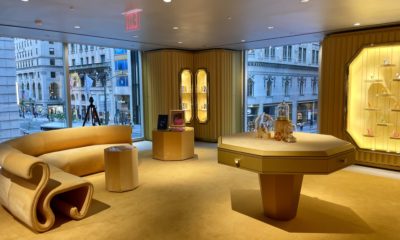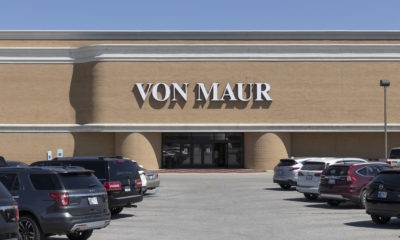Lee Eisenberg is a quintessential New Yorker. A few years ago, the former editor of Esquire magazine was approached about becoming the creative director at Lands' End.
“And we'll fly you into Dodgeville,” the specialty apparel company told him, “to have a look at our operations.”
As he later related the story, Eisenberg asked, “Where's that?”
“Dodgeville? It's in Wisconsin.”
“No,” the New Yorker said, “I meant, where's Wisconsin?”
Advertisement
Prophetic. Because many these days are asking: Where's Lands' End?
A couple of years ago, the successful catalog and Internet retailer was swallowed up by Sears. And now, Sears is being swallowed up by Kmart. Begging the question: Can Lands' End possibly survive as a strong retail brand?
And it raises a larger question. At the risk of boring everybody out there with all our talk about branding, brand management and brand strength: The brand is more than the label on the collar, more even than the nameplate over the door. Brand management is understanding exactly who you are in the marketplace, what you stand for and what strengths you have, and creating a marketing campaign – an all-inclusive offensive – that either reinforces or changes your market position.
When Sears paid nearly $2 billion for Lands' End, it saw an opportunity to offer a high-quality brand to customers who were wandering the aisles in search of appliances and power tools. And Lands' End saw the opportunity to suddenly appear in nearly 1000 stores around the country, far outstripping the distribution of rivals like L.L. Bean.
And, in the beginning, that seemed to work.
But that bloom seems to have fallen from the rose. Sears has been accused of mismanaging the brand, scattering the merchandise around the store so that it loses its brand impact. In the beginning, it ordered too much merchandise. Then not enough. Too many of the items hit the stores too late for the seasons they were aiming at. And they weren't hitting the price points Sears customers expect.
Advertisement
As one analyst said, “Lands' End was one of the most brilliant brands of the 20th Century and one of the most irrelevant brands of the 21st Century. In Sears stores, it's poorly positioned between men's suits, snow blowers, tools, denim and work clothes. Once you make your brand something people can buy on their way to buying socket wrenches, you denigrate exclusivity.”
Lands' End had grown in strength by offering unusual goods and premium customer service. Now it had become too mass, too downmarket. Sears had intended Lands' End to appeal to its higher-income shoppers, the hard-line appliance buyers, having them walk across the store to buy apparel. But that hasn't been happening.
And if its association with Sears had made its market position suffer, what will happen in the hands of Kmart, notorious for mismanaging even strong brands?
Now Sears and Kmart are going to try defining their own new brand messaging and which merchandise will be right for this new mix. Lands' End could well be a tiny part of this business, getting little or no attention.
Remember, probably the single most powerful brand name in this country – Martha Stewart (at least the pre-prison Martha) – couldn't keep Kmart out of bankruptcy.

 Headlines2 weeks ago
Headlines2 weeks ago
 Headlines2 weeks ago
Headlines2 weeks ago
 Eric Feigenbaum6 days ago
Eric Feigenbaum6 days ago
 Headlines1 week ago
Headlines1 week ago
 Headlines5 days ago
Headlines5 days ago
 Headlines2 weeks ago
Headlines2 weeks ago
 Headlines7 days ago
Headlines7 days ago














